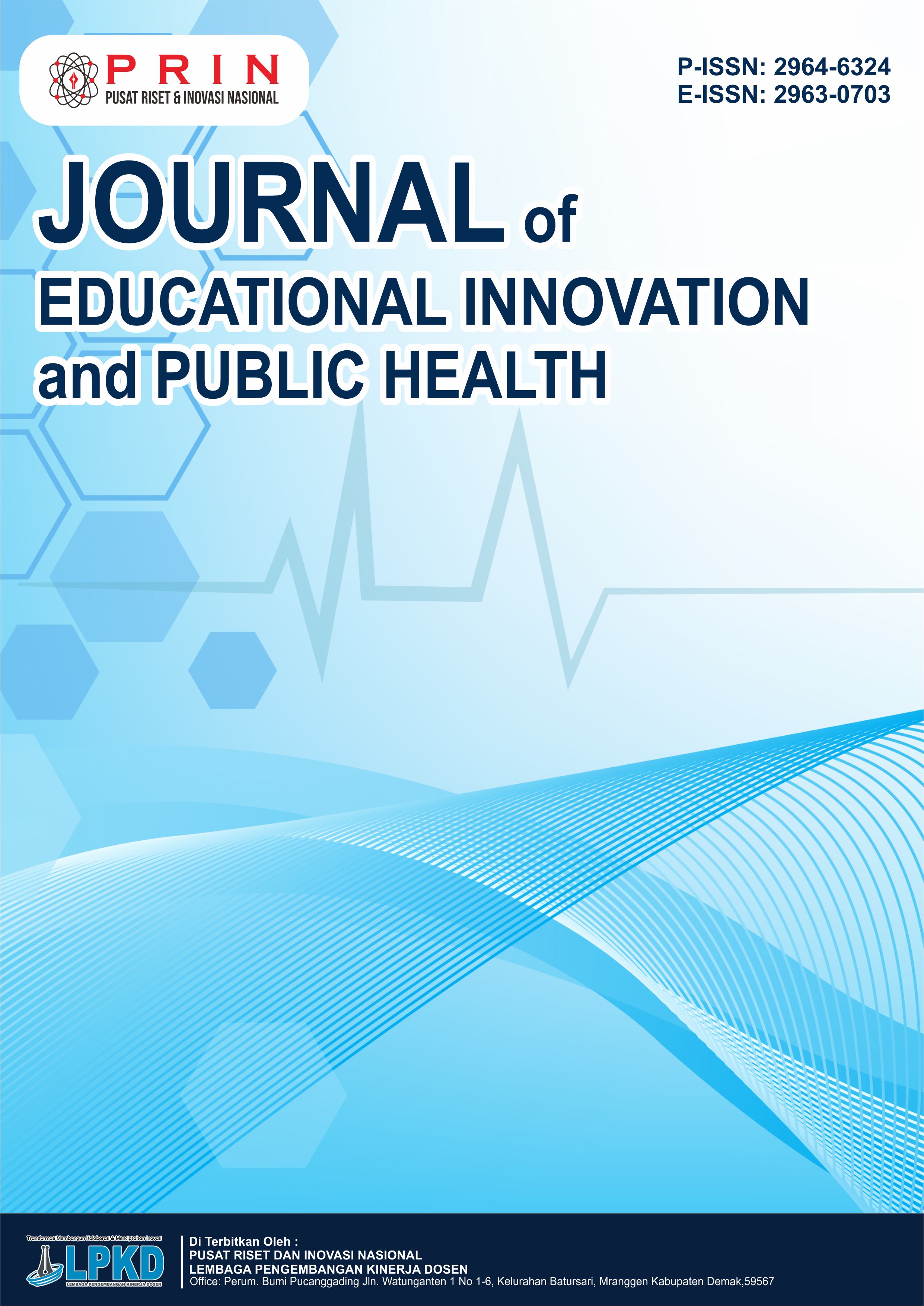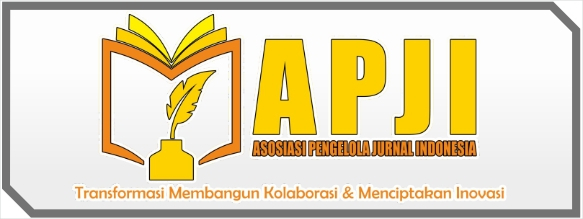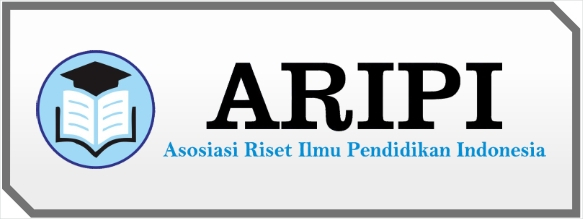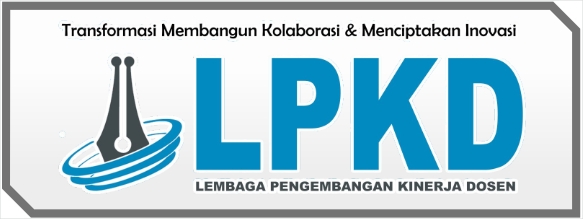The Influence of Video-Based Nutrition Education on Knowledge of Pregnancy Nutrition in Pregnant Women in Sinar Pasemah Village
DOI:
https://doi.org/10.55606/innovation.v3i1.3295Keywords:
Lectures, Knowledge, Pregnancy Nutrition, VideosAbstract
The percentage of pregnant women chronic energy deficiency in Indonesia is 9.7%, in Lampung Province it is 13.62%. The prevalence of chronic energy deficiency risk for pregnant women in Bandar Lampung is 17.36% and for non-pregnant women is 17.02%. One of the causes of malnutrition in pregnant women is the lack of knowledge of mothers about nutritious foods during pregnancy. The purpose of the study is to determine the influence of video-based nutrition education on pregnant women's knowledge about pregnant women's nutrition in Sinar Pasemah Village. Experimental quasi research design designed by Two Group Pre-Post Test with Control Group Design. The population is 46 pregnant women. A total of 46 samples were selected with a total sampling, consisting of 23 respondents from the video group and 23 respondents from the lecture group. Univariate data analysis with frequency distribution tables, Bivariate analysis with Wilcoxon test and Mann Whitney test. The average knowledge of pregnancy nutrition before video-based education was 63.26 and the average knowledge of pregnancy nutrition after video-based education was 78.48 with ap value of 0.000. Meanwhile, the average knowledge of pregnancy nutrition before lecture education was 63.04 and the average knowledge of pregnancy nutrition after lecture education was 74.57 with ap value of 0.000. The results of the Mann Whitney test were obtained 0.020. There is an influence of video-based education and lecture education on pregnancy nutrition knowledge and there is a difference in the influence of video education and lecture education on pregnancy nutrition knowledge in pregnant women in Sinar Pasemah village.
Downloads
References
Apriliani, S. L., Nikmawati, E. E., & Yulia, C. (2019). Nutritional knowledge of pregnant women in Kertasari district, Bandung regency. Media Education, Nutrition, and Culinary, 8(2), 67–75. https://doi.org/10.17509/boga.v8i2.21967
Arneliwati, A., Agrina, & Dewi, A. P. (2019). The effectiveness of health education using audiovisual media on increasing family behavior in preventing dengue hemorrhagic fever (DHF). Enfermería Clínica, 29(2013), 30–33. https://doi.org/10.1016/j.enfcli.2018.11.013
Directorate of People's Welfare Statistics. (2021). Special index report for handling stunting 2019-2020. Central Statistics Agency. [Preprint].
Hartati, H., Sumarni, S., & Anonim, T. (2021). The effect of modified online learning on increasing knowledge of pregnant women with chronic energy deficiency (CED). Jurnal Lintas Keperawatan, 2(1), 1–6. https://doi.org/10.31983/jlk.v2i1.6848
Hasim, A., et al. (2023). Effects of educational videos to increase knowledge, attitudes, and sleep quality of pregnant women with chronic energy deficiency. Poltekita: Journal of Health Sciences, 17(1), 57–66. https://doi.org/10.33860/jik.v17i1.2125
Hidayah, N. M., Mintarsih, S. N., & Ambarwati, R. (2022). Balanced nutrition education using video media on the knowledge and attitudes of adolescent girls. Sport and Nutrition Journal, 4(1), 6–11.
Jupri, A., et al. (2022). Nutrition education for pregnant women as an effort to reduce the increase in stunting rates. Jurnal Abdi Insani, 9(3), 1209–1216. https://doi.org/10.29303/abdiinsani.v9i3.735
Lestari, P. D., Azka, A., & Syah Putri, S. R. (2023). Education of pregnant women's nutrition through video media on increasing estimated fetal weight of pregnant women. Journal of Obstetrics, 10(1), 46–51. https://doi.org/10.48092/jik.v10i1.226
Mirza, M. M., Sunarti, S., & Handayani, L. (2023). The effect of nutritional status of pregnant women on the incidence of stunting: Literature study. Indonesian Journal of Public Health, 18(2), 22. https://doi.org/10.26714/jkmi.18.2.2023.22-27
Notoatmodjo, S. (2018). Public health science and art. Jakarta: PT. Rineka Cipta.
Prawirohardjo, S. (2016). Obstetrics. Jakarta: Bina Pustaka.
Rahayu, L. S., Suraya, I., & Maulida, N. R. (2022). Education and practice of fulfilling balanced nutrition for pregnant women. Shihatuna: Journal of Community Health Service, 2(1), 7–12.
Sari, I., & Sapitri, A. (2021). Examination of nutritional status in pregnant women as an effort to detect chronic energy deficiency (CED) early. Indonesian Midwifery Journal, 12(1), 16–23. https://doi.org/10.36419/jki.v12i1.434
SSGI. (2023). Results of the Indonesian nutritional status survey. Ministry of Health of the Republic of Indonesia. Retrieved from https://promkes.kemkes.go.id/materi-hasil-survei-status-gizi-indonesia-ssgi-2022
Suryani, S., & Nadia, N. (2022). The role of animated video media in improving nutritional knowledge of pregnant women. Nursing Care and Health Technology Journal (NCHAT), 2(1), 37–47. https://doi.org/10.56742/nchat.v2i1.34
Teguh, N. A., et al. (2019). Factors influencing the incidence of chronic energy deficiency (CED) in pregnant women in the working area of UPT Puskesmas I Pekutatan, Jembrana, Bali. Intisari Sains Medis, 10(3), 506–510. https://doi.org/10.15562/ism.v10i3.432
Wiknjosastro, H. (2016). Midwifery (4th ed., 8th printing). Jakarta: Bina Pustaka Sarwono Prawirohardjo Foundation.
Downloads
Published
How to Cite
Issue
Section
License
Copyright (c) 2024 Journal of Educational Innovation and Public Health

This work is licensed under a Creative Commons Attribution-ShareAlike 4.0 International License.



















